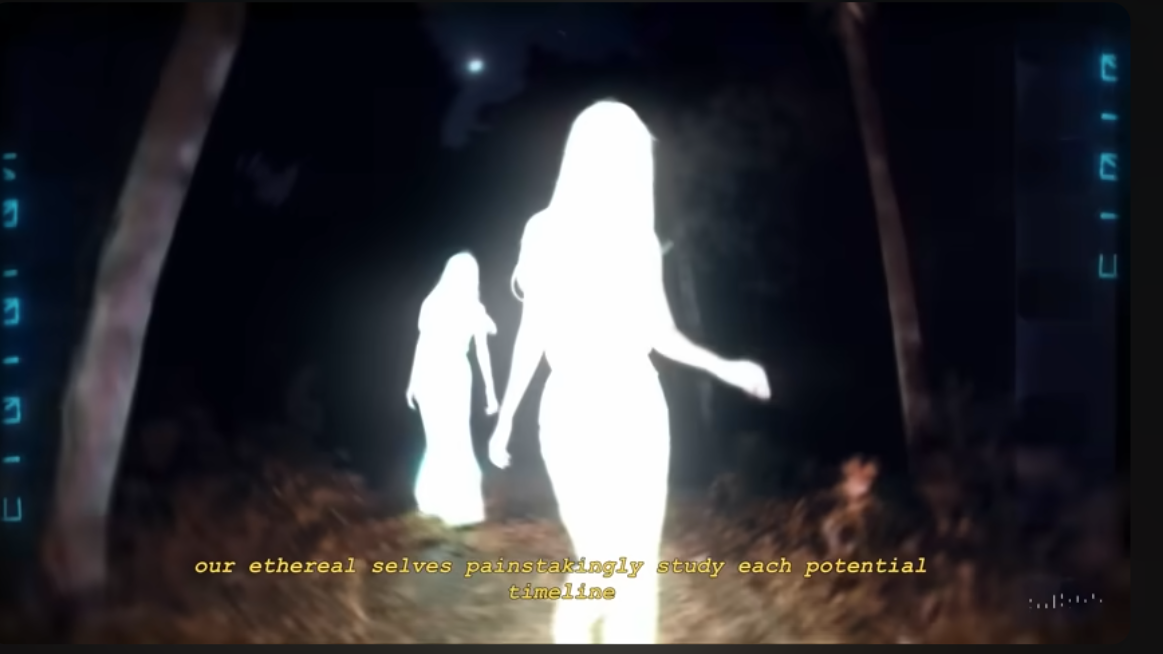Protopica: Preserving Culture with Generative AI, Not Replacing It

How AI can safeguard endangered languages and reimagine cultural storytelling
March 12, 2025
Cezary Gesikowski

How do we preserve cultural heritage in a world where languages and traditions are disappearing faster than ever? In early 2024, two creators asked this question, wondering how they could contribute their skills to fight against the annihilation of their cultural histories. It felt both urgent and deeply personal for them. The answer came from an unexpected place — generative AI — specifically the early prototype version of the OpenAI video platform Sora.
Their short film, Protopica, became a bold experiment using emerging technology to honour culture rather than erase it. It was a controversial and counterintuitive venture, as many artists around the world were reacting with fear and apprehension to the emerging power of generative AI. But the brave artistic duo resisted caving into the widespread skepticism and decided to experiment with the new tech. Instead of AI diluting identity, they wondered: Could it help safeguard the stories, languages, and symbols at risk of being forgotten?
Turns out, it could.
From an Idea to a Movement
It all started with a talk at OCAD University in early 2024. Co-directors Manuel Sainsily and Will Selviz explored the theme of cultural preservation, drawing an unexpected parallel:
“If we can protect the world’s seeds in the Svalbard Global Seed Vault, why can’t we do the same for our stories and languages?”

Image: Protopica: The Evolution of an Idea | OpenAI Forum Presentation
That idea stuck. Shortly after, the pair joined an alpha program for OpenAI’s Sora, an experimental AI video model. Their goal? To merge cutting-edge technology with the ancestral knowledge of Guadeloupean Creole, a language rarely represented in mainstream media.

Image: OpenAI Forum Event Info | OpenAI Forum Presentation
At the recent OpenAI Forum event, they shared a sobering stat: One language disappears every 14 days. Nearly half of the world’s 7,000 languages could be gone by the next century.
With Protopica, they set out to fight that tide.
Storytelling Rooted in Identity
The core question behind Protopica shaped everything: What if our lives result from choices made long before we existed?
Inspired by their Afro-Caribbean heritage, Sainsily and Selviz wove together motifs from their culture: butterflies shaped like Guadeloupe’s islands, ancestral spirits guiding the next generation, and a looping journey of rebirth that reflects how knowledge is passed down.
But they knew AI came with risks. The last thing they wanted was digital blackface, where generative models create cultural imagery without true understanding. Cultural appropriation is something contemporary artists, especially those seeking authentic cultural preservation, can’t simply ignore.

Image: Ideation involved design thinking in virtual whiteboard | OpenAI Forum Presentation
Their solution? Rigorous cultural checks. Every image and every story beat was validated to ensure authenticity, never distortion. Aware of potential bias and lack of precise control, they set a goal of being meticulous within the constraints they had and challenged themselves to work with AI rather than against it.

Image: Initial research approaches for the Protopica project | OpenAI Forum Presentation
Scripting in a Language the World Rarely Hears
One of the most ingenious approaches was to flip the filmmaking formula almost on its head. Instead of starting with visuals, the team began with sound — a poetic monologue recorded in Guadeloupean Creole.

Image: Scripting approach | | OpenAI Forum Presentation
For many viewers, it would be their first time hearing the language. That was intentional. Anchoring the film in Creole wasn’t just a stylistic choice but an act of preservation. They even experimented with a custom GPT for Guadeloupean Creole, which Sainsily noted could help keep this language alive for future generations.
And so, the film’s structure took shape: a spirit reborn into a child, symbolizing how traditions are passed down. The script evolved through multiple iterations in both English and Creole, ensuring the message remained clear no matter the audience.
AI as a Creative Partner, Not a Replacement
The real challenge began once the script was set: bringing it to life with AI.
The Protopica team ran thousands of AI-generated shots through Sora, selecting only a small fraction for the final cut — a staggering 1000/27 generated to keeper shots ratio that underscores the level of dedication in curation involved.

Image: AI Visualization | OpenAI Forum Presentation
It’s important to mention that the early versions of Sora they had access to lacked image input, meaning the team had to rely entirely on text prompts to guide the AI. That might sound like a limitation by today’s standards, but they saw it differently: “Working with AI is a collaboration. You don’t have full control, and that’s exactly what sparks new ideas.”
Rather than fearing AI’s unpredictability, they embraced it and let the urge for tight control go. The results were serendipitous!
Making Sure AI Doesn’t Get It Wrong
One of the most crucial steps? Cultural validation.
Every shot was reviewed by Afro-Caribbean and Latin American communities to ensure accuracy and respect. The goal was clear: AI should enhance the story, not distort it.

Image: Cultural validation is crucial to ensure authenticity | OpenAI Forum Presentation
Even the film’s grainy archival look was intentional — mimicking old footage to reinforce Protopica’s preservation theme while softening AI’s uncanny, sometimes-too-polished visuals.
This wasn’t just about aesthetics. It was about making AI-generated content feel human.
Sharing Protopica With the World
By July 2024, Protopica was ready. The film premiered during Sora’s alpha phase, and within weeks, it had racked up over 500,000 views. Screenings followed at Sora Selects in NYC and the VIFF Signals Exhibition in Vancouver.

Image: Execution, which editing your use is not important, it’s what you have access to where you can use AI generated images | OpenAI Forum Presentation
The response was overwhelming. People weren’t just watching; they were discussing AI’s role in storytelling, technology’s responsibility, and what it means to preserve culture in the digital age.
For Sainsily and Selviz, that was the real success. Their efforts were validated and appreciated by culturally sensitive audiences.
More Than a Film — A Vision for the Future
Protopica isn’t just a short film. It’s a mission. The team is expanding their work beyond cinema with three core goals:
🔹 Public Speaking — Leading conversations on AI ethics and cultural preservation at global forums.
🔹 Experiential Design — Building immersive projects for brands that want to engage diverse communities authentically.
🔹 Education — Developing AI and XR curricula that empower underrepresented voices.
“We’re global citizens dedicated to making a better world,” says Sainsily. “Protopica is about using cutting-edge tools to leave behind a brighter, more equitable legacy.”
Final Thoughts
By blending Guadeloupean Creole storytelling with generative AI, Protopica challenges a major assumption: that AI inevitably erases identity. Instead, it offers an alternative vision where communities collaborate with AI to keep their cultures alive.

Image: Manuel Sainsily & Will Selviz · Sora Showcase
As Sainsily and Selviz continue sharing Protopica at festivals, workshops, and online spaces, they hope to inspire more storytellers to use AI on their own terms.
“We want to spark global discussions about what’s possible,” says Selviz, “while staying rooted in the cultures that shape us.”
In a world where languages vanish at an alarming rate, Protopica is proof that the future of preservation can be generative, inclusive, and deeply human.
Have a look at the film they made and leave a comment with your thoughts.
Do you have a cultural heritage preservation project that AI could help you with?
4
Comment (1)
Popular

